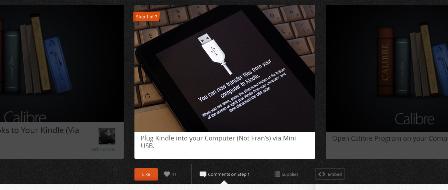 It’s a truism that these days if you want to know ‘How to’ do something, whether it be improve your guitar fingering, replace a spark plug or quickly get the seeds from pomegranate, a quick web search will probably find you a wealth of potential solutions. They might be videos on YouTube, blog posts or increasingly making use of an app designed to help you do just that. Whether you’re on the iOS or Android platform, there’s an app for that! Although browsing through their online galleries from the comfort of your monitor and computer is indeed possible, because they can also be viewed from within the app on your mobile device of choice, you can often taken your newly found guide to the task itself. A much more efficient and effective way of working.
It’s a truism that these days if you want to know ‘How to’ do something, whether it be improve your guitar fingering, replace a spark plug or quickly get the seeds from pomegranate, a quick web search will probably find you a wealth of potential solutions. They might be videos on YouTube, blog posts or increasingly making use of an app designed to help you do just that. Whether you’re on the iOS or Android platform, there’s an app for that! Although browsing through their online galleries from the comfort of your monitor and computer is indeed possible, because they can also be viewed from within the app on your mobile device of choice, you can often taken your newly found guide to the task itself. A much more efficient and effective way of working.
So as a consumer, theses apps are an absolute boon, but do they have a place in the classroom? Well I’d argue yes, but first we need to spin them around and rather than having our students simply consume information, we need to think of them using the apps as creators … requiring a much higher level of demand and hopefully more powerful learning.
The first requirement is having access to mobile devices onto which the apps have been installed. This may be possible if you’re one of the increasing number of schools with class sets or even 1:1 access to mobile devices. Or perhaps you’re on the BYOD/T route and can ask your students to obtain the apps themselves? (The apps are both free). Thinking forward a little to when their completed guides are published and shared, demands a little forethought and will depend on which of the domains you’re in: school devices which are shared, 1:1 or user-owned devices. Will they be using generic or personal accounts and how will these need to be set up in the first place? How will the completed guide then be shared with peers and/or teachers? Perhaps by bunching together links to them all or maybe embedding them on a central page on a school website or blog?
But what would students actually use them for? Well perhaps they should be given the choice; an alternative or antidote to producing a written account or presentation? Here are a few possible options:
- Science – replacing the standard diagram, method, results, conclusion-style lab report.
- Drama/Theatre – showing/discussing how a particular scene might be set.
- Food Tech – there are plenty of exemplars already in the libraries.
- Languages – create a guide on any topic in the language being studied.
- Art – illustrate a particular technique, or provide a walk-though of a gallery.
- Geography – provide a description of a geographical feature, actually in the field.
- PE – make a guide coaching a beginner in a particular technique.
- History – create a narrative of a historical location.
- Maths – generate some ‘real-world’ mathematical exemplars.
As always when students are publishing to an open platform, this kind of activity has to come with a health warning. Hopefully your students will be sufficiently literate to appreciate the consequences of posting to the Web; if not, perhaps this provides an ideal teaching opportunity?